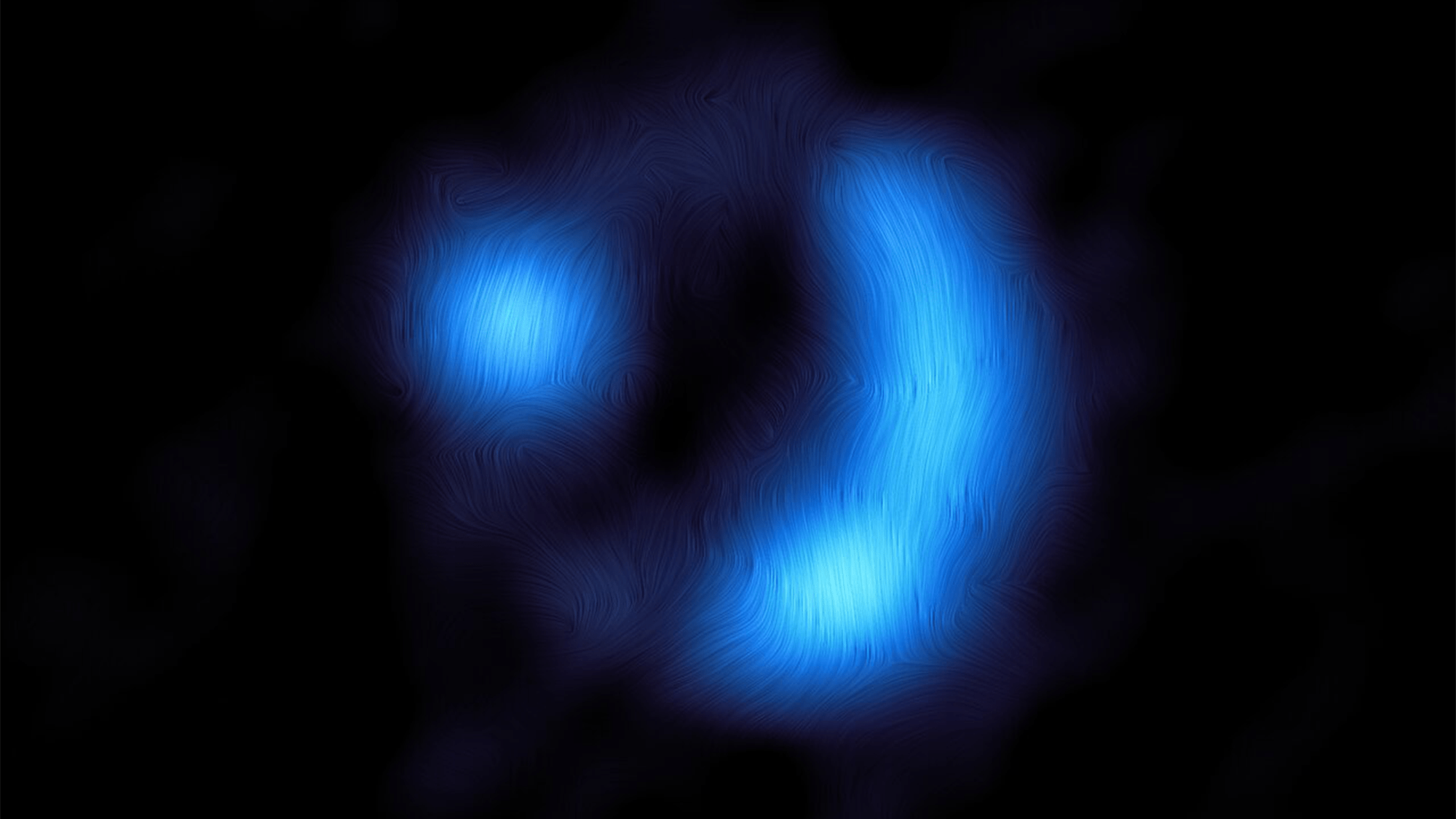

Astronomers using the Atacama Large Millimeter/submillimeter Array (ALMA) radio telescope have detected the magnetic field of a galaxy that is so far away from Earth, that its light has taken more than 11 billion years to get here. With the telescope, we are seeing this galaxy just as it was when our universe was only 2.5 billion years old.
[Related: Our universe mastered the art of making galaxies while it was still young.]
The findings are detailed in a study published September 6 in the journal Nature. Finally seeing this cosmic artifact could give astronomers some vital clues to how the magnetic fields of galaxies like the Milky Way came to be. Magnetic fields are present in many of the universe’s astronomical bodies from stars to planets and up to galaxies.
“Many people might not be aware that our entire galaxy and other galaxies are laced with magnetic fields, spanning tens of thousands of light-years,” study co-author and University of Hertfordshire astrophysicist James Geach said in a statement.
It is not yet fully clear both how early in our universe’s lifetime and how quickly the magnetic fields in galaxies form. To date, astronomers have only mapped magnetic fields in galaxies close to us.
“We actually know very little about how these fields form, despite their being quite fundamental to how galaxies evolve,” study co-author and Stanford University extragalactic astronomer Enrique Lopez Rodriguez said in a statement.
In this new study, the team used data from ALMA and the European Southern Observatory (ESO) and discovered a fully formed magnetic field in a distant galaxy. It’s similar in structure to what is observed in nearby galaxies, and while the magnetic field is about 1,000 times weaker than our planet’s magnetic field, it extends over more than 16,000 light-years.
Observing a fully developed magnetic field this early in the history of the universe is an indication that magnetic fields spanning entire galaxies can form pretty quickly, even while younger galaxies are still growing.
According to the team, intense star formation in the universe’s early days may have played a role in accelerating the development of the magnetic fields and that the fields can influence how later generations of stars will eventually form.
[Related: Secrets of the early universe are hidden in this chill galaxy cluster.]
These new findings show off the inner workings of galaxies, according to study co-author and ESO astronomer Rob Ivison. “The magnetic fields are linked to the material that is forming new stars,” Ivison said in a statement.
To detect this light, the team searched for light emitted by dust grains in a distant galaxy named 9io9. When a magnetic field is present, galaxies are full of dust trains that tend to align and the light that they emit becomes polarized. When this happens, the light waves oscillate along a preferred direction instead of randomly. When ALMA detected and mapped the more polarized signal coming from galaxy 9io9, it confirmed the presence of a magnetic field in a very distant galaxy for potentially the first time.
“No other telescope could have achieved this,” said Geach.
The team hopes that with this new discovery and future observations of distant magnetic fields, astronomers will get closer to how fundamental components of galaxies form.
